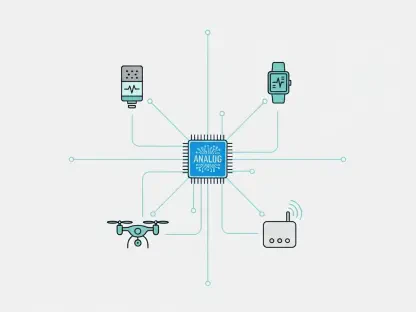In a world where access to data is becoming increasingly contentious, Laurent Giraid offers expertise on the transformative journey of AI infrastructure. With the dramatic shift in Bright Data’s direction, he discusses the motivations behind the development of their AI suite and the profound implications of their court victories over Meta and Elon Musk’s X.
Can you provide an overview of Bright Data and its transition from a web scraping service to an AI infrastructure provider?
Bright Data began its journey as a web scraping service but has since evolved into a comprehensive AI infrastructure provider. This transformation is a response to the growing demand for real-time web data, which has become crucial for AI applications like chatbots and autonomous systems. Their new offerings are designed to ensure AI companies can access the data they need without monopolistic restrictions posed by other large tech platforms.
What motivated Bright Data to develop the new AI infrastructure suite, and what are its key components?
The motivation stemmed from the increasing difficulty AI companies face in obtaining current web information. Bright Data’s AI infrastructure suite aims to bridge this gap with components like Deep Lookup and Browser.ai, focusing on real-time data access and seamless interaction with web services. Their pivotal role is not in creating algorithms or computing power but in ensuring essential data access.
How do Deep Lookup, Browser.ai, and MCP Servers specifically address the data access challenges faced by AI companies?
Deep Lookup functions as a research engine, providing comprehensive answers to complex queries. Browser.ai offers an “unblockable” browsing experience for autonomous AI agents, mimicking human behavior to avoid bot detection systems. Meanwhile, MCP Servers deliver real-time data through a low-latency control layer, crucial for enhancing AI agents’ capabilities in dynamically responding to web conditions.
Could you elaborate on the court cases involving Meta and Elon Musk’s X? What were the main arguments from both sides?
The court cases revolved around allegations that Bright Data was scraping platforms illegally. Meta and X argued against unauthorized data collection, while Bright Data contended the importance of public data access. The rulings highlighted the contradictory stances of major tech firms, who were customers of Bright Data yet pursued legal actions against it.
What is the legal precedent set by the rulings against Meta and X regarding public data?
The rulings established that any information visible without logging in constitutes public data, legally accessible for collection and use. This decision underscores the significance of ensuring open data access, preventing information monopolies by allowing the legal use of visible web content.
How has the court’s decision impacted the AI industry, especially with regards to data access for training and operation of language models?
The decision has opened up valuable avenues for AI companies to obtain the data necessary for training models, enhancing their ability to create sophisticated language models. By clarifying what counts as public data, Bright Data has fortified the AI industry’s capability to independently access essential web information.
How does the MCP Server work, and what advantages does it offer AI developers?
MCP Servers provide a real-time data extraction protocol, allowing AI developers to build systems that can act on live web data instead of static training data alone. This offers an advantage in immediate adaptability, particularly valuable in rapidly changing digital environments.
What unique challenges does Browser.ai tackle, and what makes it “unblockable”?
Browser.ai addresses the challenge of web access restrictions by simulating human browsing behavior. By mimicking natural user interactions, it avoids triggering detection systems that block automated bots, thus ensuring uninterrupted data procurement.
How does Bright Data ensure compliance with privacy regulations like the GDPR and CCPA, especially when collecting public data?
Bright Data commits to transparency and compliance by notifying individuals when their personal information is collected and offering opt-out options. Their robust compliance infrastructure reflects adherence to European GDPR and California CCPA standards, aligning ethical practices with legal requirements.
What strategies does Bright Data employ to overcome website blocking mechanisms, and how do these strategies benefit your customers?
Their strategies include advanced techniques using real devices and browser fingerprints to mimic human behaviors. These efforts not only prevent blockages but also empower customers with uninterrupted data access, crucial for AI systems relying on dynamic web interactions.
How has the launch of ChatGPT influenced Bright Data’s growth and demand for its services?
The explosion in AI applications post-ChatGPT has driven unprecedented demand for Bright Data services as companies seek vast amounts of training data. This surge has resulted in substantial growth, reflecting the increasing reliance on real-time web data in AI development.
What are the broader implications of Bright Data’s success in court for the landscape of web data access?
Their success sets a legal standard for data accessibility, challenging attempts to create monopolies over web information. This victory secures independent data access for AI companies, enabling them to operate without restrictive dependencies on larger tech entities.
How does Bright Data’s proxy network contribute to its competitive edge in the industry?
With over 150 million IP addresses in 195 countries, Bright Data’s proxy network offers unparalleled global reach and access. This expansive infrastructure helps circumvent geographical restrictions and, combined with their patents, reinforces their position as leaders in the domain.
How do you see the battle over web access evolving, particularly with the move towards closed data ecosystems?
As major tech firms consolidate control over data, the need for independent access solutions will grow. The transition towards closed ecosystems can increase demand for infrastructure providers like Bright Data to ensure continued accessibility and competitive balance in the AI landscape.
Can you share more about the patents that Bright Data holds and how they support your business model?
Their patent portfolio, consisting of thousands of claims, represents technological innovations critical to overcoming web access barriers. These patents underpin Bright Data’s business model by safeguarding their methods and maintaining service reliability against evolving website blocking technologies.
What are the growth trends you’re observing in the AI field, particularly in terms of businesses scraping AI chatbots?
There’s increasing interest in utilizing AI chatbots themselves as data sources. Businesses are exploring methods to extract valuable interaction data from these chatbots, reflecting a trend toward leveraging AI outputs for broader business intelligence and strategic insights.
How does Bright Data balance its engineering focus with the broader business needs of the AI ecosystem?
Bright Data prioritizes technical excellence while aligning its infrastructure developments with the practical needs of its customers. This approach ensures their engineering prowess translates into solutions that address tangible challenges in the AI ecosystem.
When will the general public gain access to Deep Lookup, and how can business customers get started with it?
Business customers can access Deep Lookup through a waitlist, with general public availability planned for the near future. This phased rollout allows Bright Data to refine the technology while strategically expanding its reach.
How do Bright Data’s legal victories align with its long-term vision for data access and AI infrastructure?
Their victories reinforce Bright Data’s commitment to open data access, pivotal to their role as a leading provider of AI infrastructure. Upholding legal precedents aligns with their strategic goal to democratize data access and support widespread AI innovation.
What role do you foresee Bright Data playing as the AI industry continues to evolve, especially with regard to maintaining competitive balance?
Bright Data is poised to be a key player in ensuring equitable access to the data essential for AI development. As the industry continues to advance, their infrastructure solutions will be crucial in preventing monopolies and fostering a competitive, innovative AI environment.









